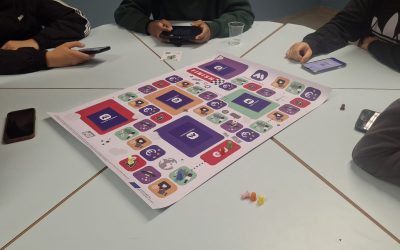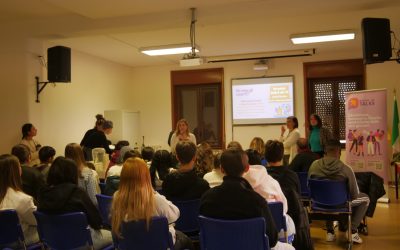Storytelling isn’t just for bedtime.
Why should every teacher bring it into the classroom? What can it add to STEAM learning? And how to use it effectively?
For generations, stories have been told to help us connect, understand, and remember. Beyond just entertainment, telling and hearing stories is a powerful way to make sense of the world. And when stories focus on real-life role models, they become even more impactful.
Building on this idea, the STEAM Tales project is based on a storytelling methodology that presents the lives and work of inspiring women in STEM to children aged 6–9. These narratives not only transmit knowledge but also spark curiosity and empower children to imagine and pursue their potential in STEM.
Each STEAM Tales story begins with the role model’s childhood, helping children connect emotionally and personally with the character, showing that she, too, was once just like them. Their life journeys are told authentically, highlighting the challenges they faced in their pursuit of STEM careers and how they overcame them. These stories reinforce key values such as problem-solving, resilience, and determination, and conclude with uplifting or thought-provoking messages to leave children feeling empowered and inspired.
STEAM Tales celebrates diversity and aims to ensure that every child feels represented and encouraged to explore any field they dream of. The stories feature 12 women from different countries, historical periods, and ethnic backgrounds, offering broad representation in STEM. This diversity enriches the educational experience by showing that success in STEM is not limited by gender, ethnicity, or geography.
To further boost engagement, the narratives are designed to stimulate children’s critical thinking through discussion. The storyline is intentionally interrupted at key moments to ask children questions and prompt reflection on the plot and the characters’ decisions and motivations.
To support deeper learning, each story is paired with two hands-on experiments, directly linked to the story’s protagonist. These activities enhance children’s understanding of scientific concepts and encourage them to explore STEM through doing. The ready-to-use lesson plans include background information, materials, clear step-by-step instructions, and explanations of the scientific principles behind each activity.
Let’s dive into what STEAM Tales offers!
- Introductory Guide
A practical overview of the STEAM Tales approach and how to use it in the classroom. - Stories
Meet the incredible women who shaped — and are shaping — the future of STEM: Ana Mayer-Kanšky, Andreja Gomboc, Ángela Piskernik, Asta Hampe, Domitila de Carvalho, Elvira Fortunato, Emmy Noether, Maryam Mirzakhani, Rose Dieng-Kuntz, Samantha Cristoforetti, Zita Martins. - Lesson Plans
Engaging, practical, and scientifically grounded hands-on activities. Designed to bring each story to life through exploration and experimentation. - Pedagogical Guide
Designed for primary school teachers, guiding them in engaging children aged 6–9, especially girls, in STEAM through inclusive storytelling and hands-on learning, offering practical tools, tips, and strategies to challenge stereotypes, spark curiosity, and build confidence.
Are you curious? Find out more resources on STEM Tales website at www.steamtales.eu
About the project
STEAM Tales – Enhancing STEAM education through storytelling and hands-on learning is a two-year-project funded by Erasmus+, KA220-SCH – Cooperation partnerships in school education, implemented in five European countries.
Partners
- MIND – Mittelhessisches Institut für Nachhaltigkeit und Diversität gGmbHNome (Germany, coordinator)
- GoINNO Inštitut (Slovenia)
- CESIE ETS (Italy)
- Universidade do Porto (Portugal)
- SCS LogoPsyCom (Belgium)
For further information
Read more about the project and visit www.steamtales.eu.
Contact Cecilie La Monica Grus: cecilie.lamonica@cesie.org.









